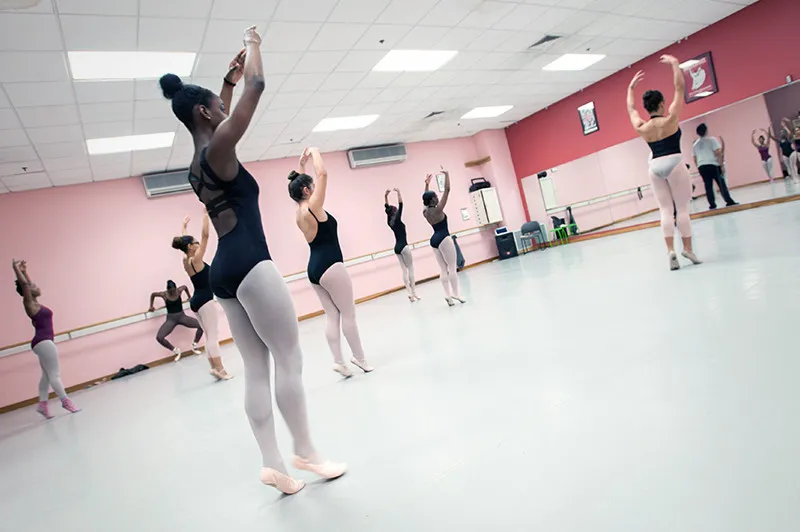Research highlight
Hip pain is different in dancers. Dynamic ultrasound sheds light on hip microinstability.
In dance, artistic statements are presented through great displays of athletic skill. Dancing requires flexibility, strength, coordination, balance, and endurance. The training required to dance is no less physically strenuous or mentally challenging than the training required for any competitive sport.
Like any althete, a dancer is at risk for a range of injuries. Dance-related injuries commonly affect feet and ankles, low back, hips, and knees.
Dancers typically specialize at a young age, which puts them at risk for certain injuries as they grow and develop. Dancers are particularly susceptible to overuse injuries because repetitive practice is central to dance training. Without proper recovery and treatment, overuse injuries may grow worse over time.

Hip pain is different in dancers. Dynamic ultrasound sheds light on hip microinstability.
A dancer’s feet and ankles withstand a tremendous amount of impact, repetitive load, and a unique range of motion that can lead to injury. This is especially true for young dancers who are growing and developing at the same time as they’re learning dance technique. Injuries include sprains, bony stress injuries (stress reactions/fractures), tendinitis, and impingement.
Jumping on a hard floor or landing improperly may lead to tenderness and pain in the front and inside of the lower legs. This pain can start with irritation to the soft tissue lining of the bone, (periostitis, also known as shin splints). However, dancers are also at risk of bony stress injuries in the tibia that can be difficult to differentiate from periostitis.
Turnout, turning, twisting, jumping, and landing may lead to patellofemoral pain and increase the risk for sprains and strains.
The extreme range of motion common in many forms of dance can lead to hip pain. Hip pain in the front often originates from the hip flexor (iliopsoas tendinitis) and can be associated with snapping.
Other sources of hip pain include muscle and tendon strain or irritation, hip impingement, and hip labral tears. While not caused by dance, symptoms of adolescent hip dysplasia may become apparent earlier in dancers due to the demands they place on their hips.
Repetitive extension or flexion mixed with sudden muscle contractions and imbalanced strength and flexibility may produce lower back pain. Bony stress injuries (stress reaction/fracture known as spondylolysis) may also occur, especially in adolescent, still-growing dancers.
The aesthetic emphasis in dance can cause dancers to become overly concerned with their physical appearance. An obsession with being thin may lead young dancers (both female and male) to take extreme measures in diet and exercise.
Watch for symptoms of relative energy deficiency in sport (RED-S), a syndrome of poor health and declining athletic performance that happens when athletes do not get enough fuel through food to support the energy demands of their daily lives and training. Symptoms include:
Whether injury prevention or recovery is your goal, our sports medicine specialists have the skills and dedication to help your child remain active in the sport they love.
As the largest and most experienced pediatric and young adult sports medicine practice in the country, the Sports Medicine Division at Boston Children's combines personalized care with innovative treatment for each athlete we treat.
The Performing Artist Athletes Program provides specialized care in the many areas that affect performing artist athletes, including nutrition, bone and endocrine health, sports psychology, injury prevention, and rehabilitative care for injured athletes.
The Female Athlete Program takes a comprehensive approach to diagnosing, treating, and managing sports injuries in female athletes and sees athletes of any gender with low energy availability. We start by assessing the whole athlete, including exercise habits, hormonal balance, and nutritional needs — not just symptoms and injuries — to ensure peak performance.
The Micheli Center for Sports Injury Prevention, part of the Sports Medicine Division, offers practical strategies that help young athletes reduce their risk of injury while enhancing their sports performance. Our rehabilitation and strength training programs help injured athletes return to play stronger and healthier.